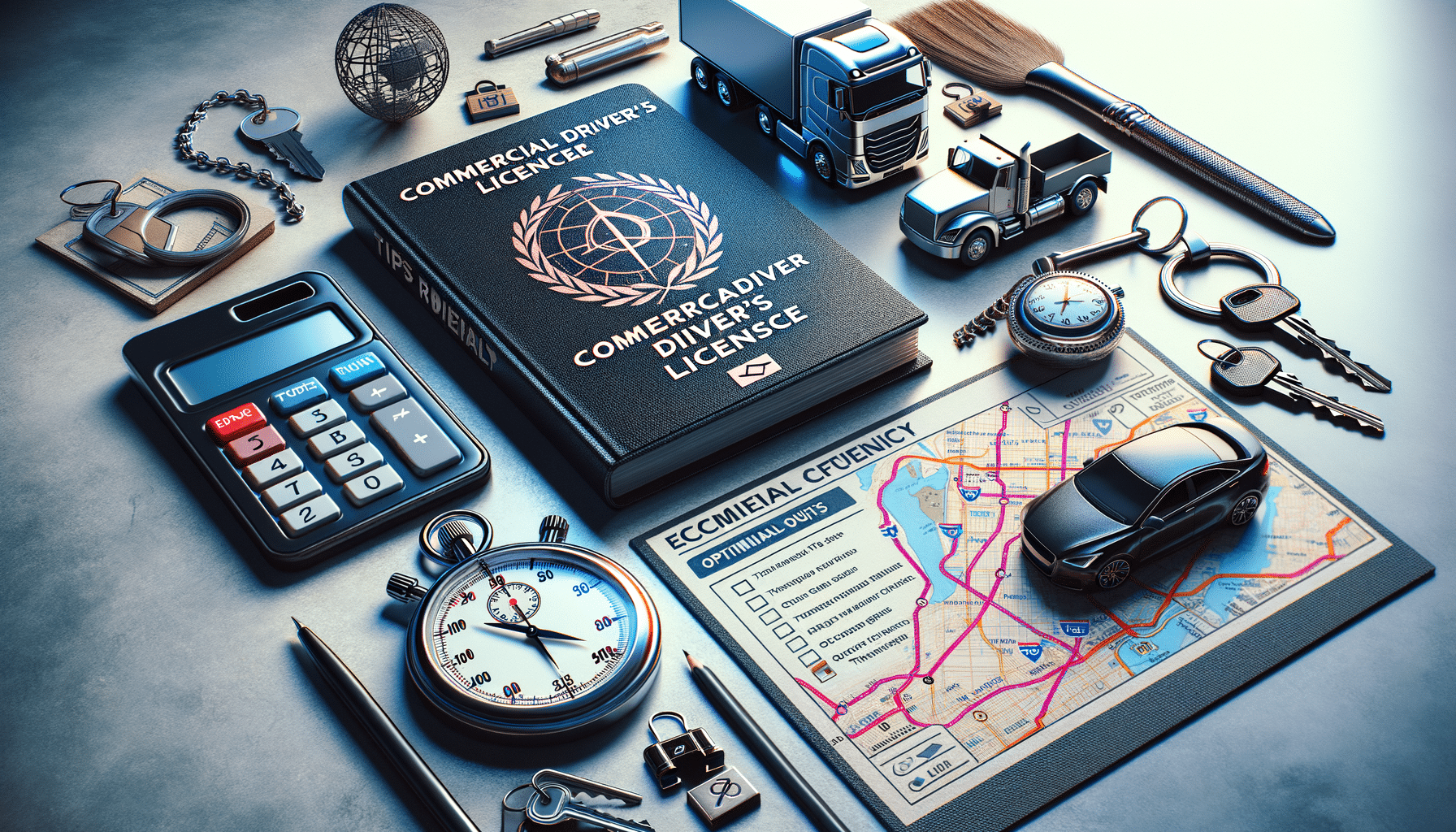
Tips for Efficiently Obtaining a Commercial Driver’s License
Understanding the Basics of a Commercial Driver’s License
Embarking on a journey to obtain a Commercial Driver’s License (CDL) is a significant step towards a rewarding career in the transportation industry. A CDL is essential for operating large or heavy vehicles, such as trucks and buses, and is a requirement for many professional driving positions. Understanding the basics of what a CDL entails is crucial for anyone considering this path.
First and foremost, it’s important to know the different classes of CDLs, which are typically divided into Class A, B, and C. Each class corresponds to the type of vehicle you are permitted to drive. For instance, a Class A CDL allows you to operate vehicles with a gross combination weight rating (GCWR) of 26,001 pounds or more, provided the towed vehicle is heavier than 10,000 pounds. On the other hand, a Class B CDL is for operating a single vehicle with a GCWR of 26,001 pounds or more, or towing a vehicle not heavier than 10,000 pounds. Finally, a Class C CDL covers vehicles designed to transport 16 or more passengers or hazardous materials.
Acquiring a CDL involves meeting specific requirements, such as age restrictions, medical examinations, and passing both written and skills tests. The process can vary slightly depending on the state, but generally, applicants must be at least 18 years old to drive intrastate and 21 years old for interstate driving. Additionally, a medical examination is required to ensure the driver meets the physical standards necessary for safe vehicle operation.
Understanding these foundational aspects of a CDL is the first step in the process. By familiarizing yourself with the requirements and the types of CDLs available, you can better prepare for the journey ahead and make informed decisions about your career in commercial driving.
Preparation and Study Strategies for the CDL Exam
Once you have a grasp of the basics, the next crucial step is to prepare for the CDL exam effectively. The exam is divided into two main parts: the written knowledge test and the practical skills test. Each of these components requires thorough preparation and understanding to ensure success.
The written knowledge test covers a wide range of topics, including vehicle operation, safety protocols, and transportation regulations. To excel in this test, it’s essential to dedicate time to studying the CDL manual provided by your state’s Department of Motor Vehicles (DMV). This manual is an invaluable resource, containing all the necessary information you’ll need to pass the test. Additionally, consider taking practice tests available online or through local driving schools. These practice tests can help you familiarize yourself with the format and types of questions you may encounter.
For the practical skills test, hands-on experience is key. Enrolling in a reputable driving school can provide you with the necessary training and practice to master the skills required for the test. These schools often offer courses specifically designed to prepare students for the CDL exam, covering essential skills such as vehicle inspection, basic control, and on-road driving.
- Utilize online resources, such as video tutorials and forums, to supplement your learning.
- Join study groups with fellow CDL applicants to share knowledge and experiences.
- Set a consistent study schedule to ensure you cover all necessary topics before the test date.
By adopting a structured approach to your preparation and utilizing available resources, you can enhance your chances of passing the CDL exam and move one step closer to obtaining your license.
Tips for Successfully Navigating the CDL Application Process
After adequately preparing for the CDL exam, the next step is to navigate the application process efficiently. This process can be complex, with various requirements and paperwork involved, but with the right approach, you can streamline it and avoid unnecessary delays.
Firstly, ensure that you meet all the eligibility criteria for obtaining a CDL. This includes age requirements, having a valid driver’s license, and passing a medical examination. Once you have confirmed your eligibility, gather all necessary documents, such as proof of identity, residency, and your Social Security number. Having these documents ready can expedite the application process and prevent any last-minute hurdles.
Next, schedule your written knowledge test with your local DMV. It’s advisable to book your test in advance, as slots can fill up quickly. After passing the written test, you’ll receive a Commercial Learner’s Permit (CLP), which allows you to practice driving a commercial vehicle under the supervision of a licensed CDL holder.
With your CLP in hand, focus on gaining practical driving experience. This is crucial for passing the practical skills test, which is the final hurdle in obtaining your CDL. Many driving schools offer behind-the-wheel training, providing you with the opportunity to practice under the guidance of experienced instructors.
- Keep track of deadlines and test dates to ensure you stay on schedule.
- Maintain a checklist of all required documents and steps in the application process.
- Seek advice from current CDL holders or instructors for insider tips and guidance.
Successfully navigating the CDL application process requires careful planning and organization. By staying informed and prepared, you can efficiently obtain your Commercial Driver’s License and embark on a fulfilling career in the transportation industry.


